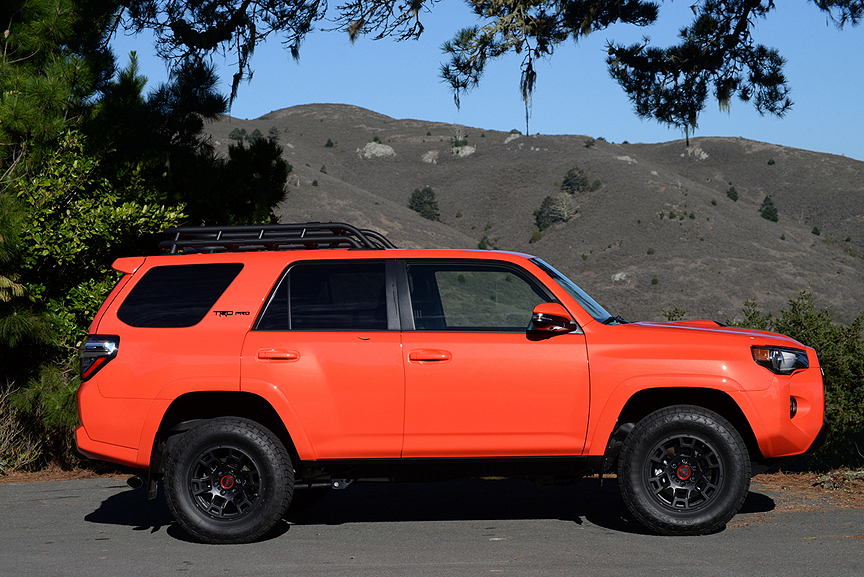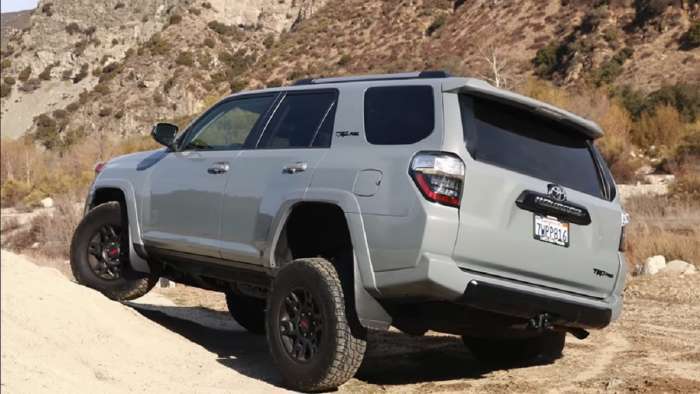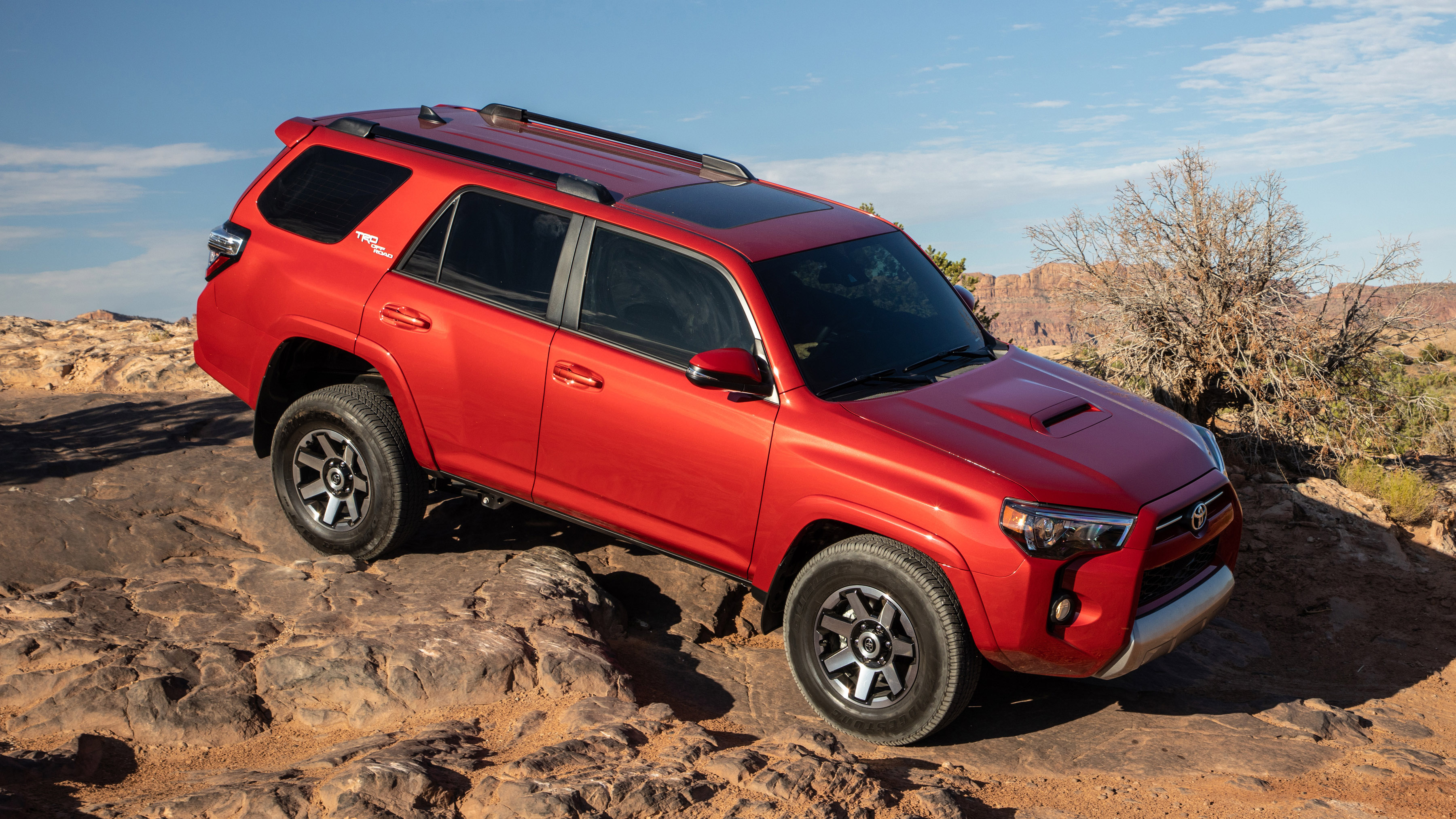Navigating Rough Terrain: A Deep Dive Into Toyota 4Runner’s Ground Clearance
Navigating Rough Terrain: A Deep Dive into Toyota 4Runner’s Ground Clearance
Related Articles: Navigating Rough Terrain: A Deep Dive into Toyota 4Runner’s Ground Clearance
Introduction
In this auspicious occasion, we are delighted to delve into the intriguing topic related to Navigating Rough Terrain: A Deep Dive into Toyota 4Runner’s Ground Clearance. Let’s weave interesting information and offer fresh perspectives to the readers.
Table of Content
Navigating Rough Terrain: A Deep Dive into Toyota 4Runner’s Ground Clearance

The Toyota 4Runner, a stalwart in the SUV segment, has long been celebrated for its ruggedness and off-road prowess. One of the key factors contributing to its off-road capabilities is its generous ground clearance. This crucial dimension, often overlooked by casual observers, plays a vital role in determining the vehicle’s ability to tackle challenging terrain, navigate obstacles, and maintain stability in demanding environments.
Ground Clearance: A Defining Feature
Ground clearance, the vertical distance between the lowest point of the vehicle’s undercarriage and the ground, is a critical metric for off-road vehicles. It dictates the vehicle’s ability to traverse uneven surfaces, clear obstacles, and maintain contact with the ground. A higher ground clearance allows the vehicle to navigate over rocks, ruts, and other terrain irregularities without scraping or getting stuck.
The Toyota 4Runner’s Ground Clearance Advantage
The Toyota 4Runner has consistently boasted impressive ground clearance figures throughout its generations, making it a popular choice for adventurers seeking to conquer challenging off-road trails.
Generational Ground Clearance Evolution:
- 1st Generation (1984-1989): The original 4Runner, based on the Hilux pickup truck, offered a respectable ground clearance of 8.1 inches.
- 2nd Generation (1990-1995): The second generation saw a slight increase in ground clearance, reaching 8.7 inches.
- 3rd Generation (1996-2002): This generation marked a significant leap forward, with ground clearance reaching 9.3 inches.
- 4th Generation (2003-2009): The 4th generation 4Runner further enhanced its off-road capabilities with a ground clearance of 9.6 inches.
- 5th Generation (2010-2022): The fifth generation maintained a generous ground clearance of 9.6 inches.
- 6th Generation (2023-Present): The latest 4Runner continues this tradition, offering a ground clearance of 9.6 inches for the SR5 and Limited trims, and a slightly higher 9.8 inches for the TRD Off-Road and TRD Pro models.
Factors Affecting Ground Clearance:
While the stock ground clearance is a significant factor, other aspects can influence the vehicle’s overall off-road performance:
- Tire Size: Upgrading to larger tires with a taller sidewall can increase ground clearance.
- Suspension Lift Kits: Installing a suspension lift kit can significantly increase ground clearance by raising the vehicle’s body.
- Undercarriage Protection: Skid plates, strategically placed to protect the vehicle’s undercarriage, can prevent damage from rocks and other obstacles, potentially improving ground clearance in some scenarios.
The Importance of Ground Clearance for the Toyota 4Runner
The Toyota 4Runner’s substantial ground clearance provides numerous benefits, enhancing its off-road capabilities and overall driving experience:
- Improved Obstacle Clearance: A higher ground clearance allows the 4Runner to easily navigate over rocks, bumps, and other obstacles without scraping its undercarriage.
- Enhanced Approach and Departure Angles: A higher ground clearance translates to better approach and departure angles, allowing the 4Runner to tackle steep inclines and descents with confidence.
- Improved Breakover Angle: A higher ground clearance improves the breakover angle, enabling the 4Runner to traverse uneven terrain with ease.
- Increased Water Fording Depth: A higher ground clearance allows the 4Runner to safely navigate through deeper water, reducing the risk of water damage to the engine and other critical components.
- Enhanced Stability: A higher ground clearance provides a higher center of gravity, contributing to improved stability on uneven surfaces and reducing the risk of rollovers.
Ground Clearance and Driving Experience
While ground clearance is crucial for off-road performance, it also plays a role in the overall driving experience:
- Improved Ride Height: A higher ground clearance offers a commanding driving position, providing better visibility and a sense of control.
- Increased Ground Clearance for Cargo: A higher ground clearance allows for easier loading and unloading of cargo, especially when dealing with bulky or heavy items.
FAQs about Toyota 4Runner Ground Clearance:
Q: How much ground clearance does a Toyota 4Runner have?
A: The ground clearance of a Toyota 4Runner varies depending on the trim level and generation. The 6th generation 4Runner offers 9.6 inches of ground clearance for the SR5 and Limited trims, while the TRD Off-Road and TRD Pro models boast a slightly higher 9.8 inches.
Q: Is the Toyota 4Runner good for off-roading?
A: Yes, the Toyota 4Runner is known for its off-road capabilities. Its generous ground clearance, robust construction, and available off-road-focused trims make it a popular choice for adventurers seeking to explore challenging terrain.
Q: Can I increase the ground clearance of my Toyota 4Runner?
A: Yes, you can increase the ground clearance of your 4Runner by installing a suspension lift kit or upgrading to larger tires. However, it is essential to ensure that any modifications are done by a qualified mechanic and that they comply with local regulations.
Q: What are the benefits of a higher ground clearance?
A: A higher ground clearance improves obstacle clearance, approach and departure angles, breakover angle, water fording depth, and overall stability, enhancing the vehicle’s off-road capabilities.
Tips for Maximizing Ground Clearance in a Toyota 4Runner:
- Avoid Obstacles: When driving off-road, it is essential to avoid obstacles that could potentially damage the undercarriage.
- Use Low Gear: When tackling steep inclines or descents, use low gear to maintain control and prevent strain on the engine and transmission.
- Engage 4WD: When driving on challenging terrain, engaging 4WD will provide additional traction and stability.
- Check Tire Pressure: Ensure that your tires are inflated to the correct pressure for off-road driving.
- Inspect Undercarriage: Regularly inspect the undercarriage for any damage or wear and tear.
- Consider Skid Plates: Install skid plates to protect the undercarriage from damage caused by rocks and other obstacles.
Conclusion
The Toyota 4Runner’s ground clearance is a testament to its off-road heritage and a key factor contributing to its rugged capabilities. Its generous ground clearance allows it to confidently navigate challenging terrain, providing adventurers with the freedom to explore beyond paved roads. Whether tackling rocky trails, fording streams, or simply enjoying the commanding driving position, the 4Runner’s ground clearance plays a vital role in delivering a satisfying and capable off-road experience.








Closure
Thus, we hope this article has provided valuable insights into Navigating Rough Terrain: A Deep Dive into Toyota 4Runner’s Ground Clearance. We hope you find this article informative and beneficial. See you in our next article!
You may also like
Recent Posts
- The 2025 Toyota 4Runner: A Legacy Reimagined
- The Enduring Appeal Of The Toyota 4Runner Manual Transmission 4×4
- The Toyota 4Runner TRD Off-Road: A Legacy Of Adventure, Reimagined For 2025
- The Anticipation Builds: Unveiling The Next Generation Toyota 4Runner
- The 2025 Toyota 4Runner TRD: A Legacy Of Adventure Reimagined
- The Future Of Color: Exploring The Significance Of Color Trends
- The Toyota 4Runner: A Legacy Of Capability, Now With Expanded Seating
- The Toyota 4Runner Timing Belt: A Vital Component For Engine Longevity
Leave a Reply